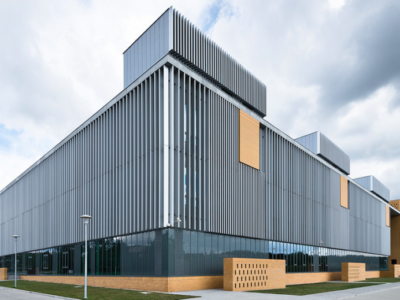Koh Ker at EurASEAA 16th Conference
2017 Jul 2017
On the EurASEAA 16th Conference a panbel session have been organized titled
“Settlement, Economics and Ecology at Koh Ker - A Regional Angkorian Center: Preliminary Results of Recent Archaeological and Paleo-Environmental Investigations”.
The session was proposed jointly by HSARI and other institutions and scholars.
Session Introduction and Synopsis:
Koh Ker emerged as a prominent Angkorian urban complex 100km northeast of Angkor at the crossing of major trade routes leading to the north and northeast. According to inscriptional evidence, Koh Ker became the Angkorian capital from 928 and 944 CE under King Jayavarman IV. Jayavarman IV moved the Ankgorian capital to Koh Ker from the earlier 9th century center at Rolous in Siem Reap. The capital returned to Siem Reap in the second half of the 10th century - shortly after Jayavarman IV’s succession and the brief reign of his son, Harśavarman II.
Koh Ker stood on the mountain of ‘Chok Gargyar’, ‘the Koki-tree grove’ and was also known as Lingapura. We know from inscriptions that laborers from distant provinces were recruited to help build the city’s monuments and infrastructure. The scale of construction and landscape modifications at that time was enormous.
Prior archaeological and historical surveys of Koh Ker focused on visible architectural remains; such as, the monuments, buildings, channels, dikes, dam, roads and main water features, the largest of which (excluding the dam) is a 1200 x 600m artificial reservoir known as the Rahal. Incidentally, the separate dam feature is one of the largest build in ancient times.
Understandably, the starting point for early investigations focused on the royal centre. Numerous temples, shrines and other features are located around the Rahal on higher ground. The most prominent includes Prasat Thom [Prang] - the 36m high, 7-tiered, carved sandstone pyramid dedicated to Siva as a “state religion” monument - and the adjoining temple and shrines at Prasat Krahom. To the south are the remains of the royal residence. Unlike the temples that were constructed of stone, brick and laterite and were dedicated to gods and ancestors, the royal residences were built of perishable organic material (e.g., wood), except for foundations, pavements, floorings and alignments, as well as stoneware ceramic roof tiles.
Koh Ker is unique because of its north-south orientation rather than the typical Angkorian east-west pattern. This orientation and other spatial arrangements of temples, shrines and landscape features have puzzled many researchers who posit hypotheses related to topographic and geologic constraints as well as symbolic reasons. Equally unique at Koh Ker, the sizes of architectural traits (e.g., windows, doorjambs, construction blocks) and statuary are comparatively large and dynamic.
Following the systematic listing and description of the primary elements (architectural and landscape features), one main direction of current research focuses on mapping inner relations between the various features.
LIDAR (Light Detection and Ranging) survey of the site by Khmer Archaeology LIDAR Consortium (KALC) brought a major breakthrough in the interpretation of the anthropogenic influences in the area, which were previously less recognisable on the ground. A number of unique built structures made of non-durable materials were mapped. These have been interpreted as the remains of earlier settlements. The results from LIDAR surveys greatly modified our picture and understanding of Koh Ker. The new data provide an improved framework both for the interpretations of the previous results and the planning of future research in regards to the settlement history of Koh Ker. In many regards, the LIDAR results have also allowed us to ask new questions and design new methodological approaches.
Thus, the site must also be interpreted as a specific network of habitation areas. The previous surveys focused on the distinctive elements of this system, such as individual temples and visible architectural structures. However, the areas between the main foci (including settlements) remain unknown. Accordingly, the complex web of the communication channels (e.g., streets, hydraulic systems) and the habitation structures were not explored. It is emphasized that these aspects provide important information when interpreting the development of Koh Ker.
Pioneering data were recovered from recent excavations and site mapping that have targeted structures, habitation sites, and activity areas. The most important task of our investigation is to clarify the settlement history of the sites. We also attempt to understand the role of several sacred sites in the contemporary settlement network.
In this session, we would like to provide a comprehensive and quick overview of the main archaeological and paleo-ecological investigations at Koh Ker conducted in recent years. We have been fortunate to have had excellent cooperation between all the people and institutions working at Koh Ker. Because of this cooperation, research efforts are integrated and shared. The new details contribute towards an enhanced understanding of the extent and character of human settlement, intervention, and impacts to the natural environment as well as delineation of the development and occupation of the site.
Presentations held:
- Dr. D. Kyle Latinis: Archaeological Excavations at Koh Ker
- Sarah Klassen, Ian Moffat, Kong Leaksmy, Damian Evans, Terry Lustig: Noninvasively Mapping Subsurface Topography to Understand Dam Failure: Results from GPR Investigations of the Water Management Feature at Koh Ker, Cambodia
- Róbert Kuszinger: _Central settlement structures identified from LIDAR analysis and their convergence with other investigations in Koh Ker
- Dr. Károly Belényesy: The modelling of the anthropogenic environment in the close surroundings of Prasat Krachap site.
- Terry Lustig, Sarah Klassen, Damian Evans, Robert French: The short life of a water-control feature and Koh Ker’s short term as the Khmer political centre
Full conference abstracts can be downloaded HERE.

